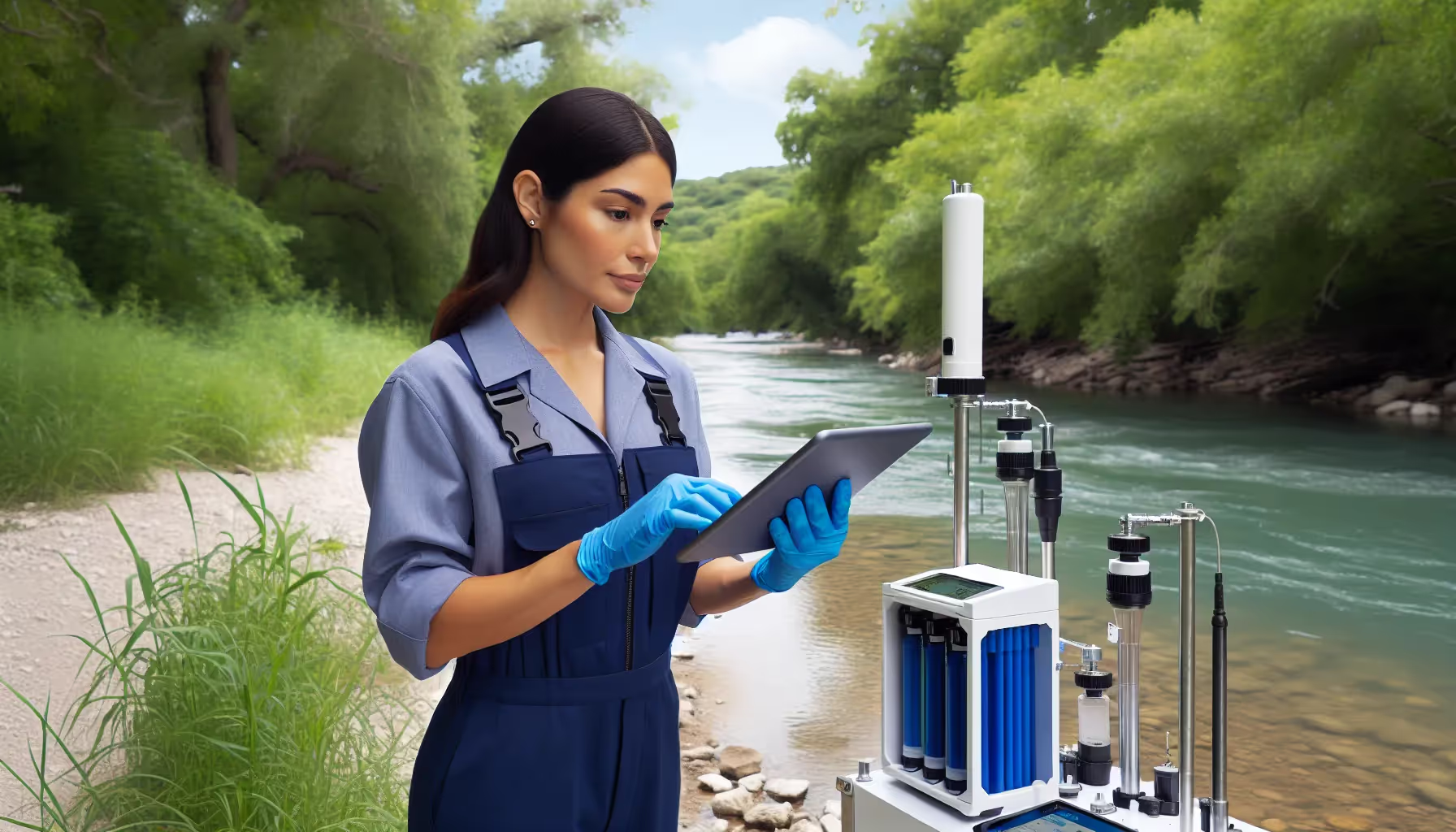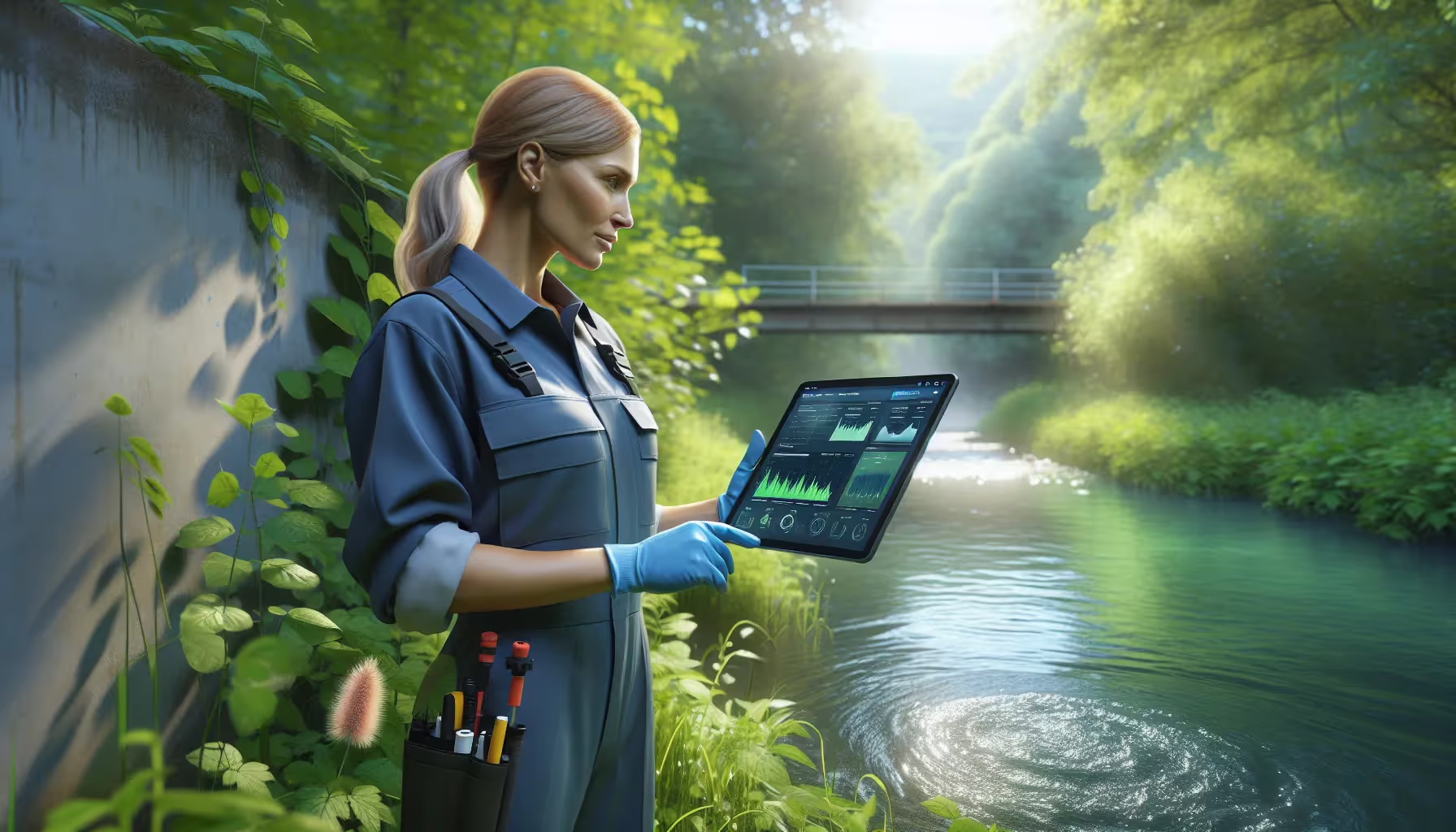Key Takeaways
- Importance of Water Quality: Nearly 2 billion people lack access to safely managed drinking water, highlighting the critical need for accurate water quality analysis and reporting for public health.
- Role of Digital Tools: Digital tools such as Field Service Management Software and mobile applications enhance the accuracy and efficiency of water quality analysis by enabling real-time data collection and streamlined reporting.
- Improved Technician Efficiency: Mobile workforce management and route management software empower technicians, allowing them to optimize travel routes, access data on the go, and complete more tasks in less time.
- Enhanced Data Analysis: Data management and analytics tools consolidate and visualize water quality data, enabling technicians to identify trends and address potential issues before they escalate.
- Challenges in Implementation: Successful use of digital tools requires adequate technician training and seamless integration with existing systems to avoid disruptions and ensure accurate reporting.
- Benefits to Public Health: By adopting digital innovations, we can improve water quality assessments, enhance community trust, and ultimately contribute to cleaner, safer water for everyone.
In an era where water quality is critical for public health, the need for accurate analysis and reporting has never been greater. Did you know that nearly 2 billion people lack access to safely managed drinking water? As we face increasing environmental challenges, digital tools are stepping in to revolutionize how we monitor and manage water quality.
By leveraging real-time data and advanced analytics, we can enhance technician reporting accuracy and streamline the entire process. These innovations not only empower technicians in the field but also ensure that water quality assessments are timely and reliable. Join us as we explore how embracing technology can lead to cleaner, safer water for everyone.
Overview of Digital Tools in Water Quality Analysis
Digital tools play a vital role in enhancing water quality analysis. They help us monitor and report vital data with precision. With technologies like Field Service Management Software, we can track technician performance and analyze results in real time.
Real-time data collection simplifies our assessment process. Automated field service solutions facilitate quick sampling and analysis, minimizing human errors and improving the reliability of results. Every drop of water counts, right? Imagine knowing instantly if your local river is safe for swimming or fishing. This capability brings us peace of mind and helps protect public health.
Mobile workforce management empowers technicians in the field. Using mobile field service apps, technicians access essential tools for data entry and reporting on the go. Instead of scribbling notes on paper, they can enter findings directly into the system, increasing accuracy and efficiency. It’s like having a digital clipboard that never smudges or tears!
Route management software optimizes travel paths for technicians. This software reduces travel time, enabling technicians to visit several sites each day. Less time on the road means more time assessing water quality, contributing to better report accuracy. Plus, who likes sitting in traffic?
Job scheduling software for technicians enhances organization and responsiveness. As technicians receive alerts about new assignments or changes, they adapt quickly, ensuring every task is completed on time. This promptness is crucial for managing emergencies or urgent water quality issues.
Data analytics tools within field service automation systems help us visualize trends and patterns. Operators can access critical insights, ensuring informed decision-making. The ability to spot issues before they escalate saves both time and resources. It’s like having a crystal ball for water quality management.
Communication isn’t overlooked in our digital toolkit. Customer engagement for service companies fosters transparency and builds trust. Automated messages keep customers informed about water quality status and technician visits. Nobody enjoys waiting without knowing what's happening, so this aspect of service takes customer satisfaction up a notch.
Finally, technician management software streamlines overall operations. By integrating all these tools, we create a cohesive system that boosts service efficiency. The combination of mobile tools and data analysis drives our mission forward, making us part of a larger community dedicated to clean water and public health.
Importance of Accurate Technician Reporting

Accurate technician reporting plays a pivotal role in maintaining water quality and safeguarding public health. Reliable data helps identify potential problems, supports compliance with regulations, and fosters community trust.
Factors Affecting Reporting Accuracy
Multiple factors can compromise the accuracy of technician reporting. Common issues include manual data entry mistakes, which can create discrepancies in water quality assessments. Delays in analysis also inhibit timely responses to potential contamination. Additionally, poor data management practices lead to lost or misinterpreted information. We experience these challenges regularly, reminding us of the critical need for efficient processes.
Role of Digital Tools in Addressing These Factors
Digital tools significantly enhance reporting accuracy by tackling these challenges head-on. Field Service Management Software streamlines workflows, enabling technicians to report findings directly from the field. This automation reduces human errors inherent in manual data recording. Route Management Software optimizes travel paths, allowing technicians to reach more sites quickly, ensuring thorough inspections. Moreover, Mobile Workforce Management equips technicians with real-time access to data and resources, enhancing efficiency and accuracy.
Incorporating Technician Scheduling Tools improves job organization and responsiveness to urgent situations. By leveraging these digital solutions, we create a more effective system that strengthens reporting accuracy, ensuring cleaner water and better community health.
Types of Digital Tools Available

Digital tools play a crucial role in enhancing water quality analysis and improving technician reporting accuracy. They provide the capability to gather and manage data efficiently. Here are some key types of digital tools used in this field.
Automated Sampling Devices
Automated sampling devices revolutionize how we collect water samples. These devices gather samples at set intervals, which cuts down the chances of manual errors. Consistency is key in water quality monitoring, and these tools maintain a reliable dataset. As a result, technicians can perform analyses with greater confidence. Imagine having a personal assistant ensuring you never forget to collect that important data on time—sounds nice, right?
Data Management Software
Data management software serves as our analytical hub. These tools process and integrate vast amounts of water quality data, allowing us to spot trends and patterns. For example, tools similar to the US EPA's WATERS system consolidate information from multiple sources. This integration helps us make sense of complex data, enabling better decision-making. Who wouldn’t want to have a clearer picture of water quality at their fingertips?
Mobile Applications for Field Reporting
Mobile applications transform how technicians report findings in real-time. These apps enable us to send observations and data on the spot, reducing delays and the likelihood of errors. For instance, programs like How's My Waterway make it easy for technicians to submit reports while on-site. Think about it—having the ability to document water conditions instantly makes everything smoother. Plus, this immediate access to information supports speedy response times, helping us tackle water issues more effectively.
Benefits of Implementing Digital Tools

Digital tools transform water quality analysis and technician reporting. They introduce accuracy, efficiency, and enhanced communication into our workflows.
Enhanced Accuracy in Data Collection
Digital tools improve accuracy in water quality measurements. Real-time monitoring captures details like pH and turbidity continuously. Automated data gathering reduces errors found in manual entry. For example, when technicians use Mobile Workforce Management apps, they submit data directly from the field. This cuts down on the back-and-forth that often leads to mistakes. Moreover, data management software helps organize vast amounts of information systematically. Trends in water quality emerge more clearly, allowing us to react swiftly to contamination issues.
Improved Efficiency in Reporting Processes
Using Automated Field Service Solutions revolutionizes our reporting processes. These solutions save us time and effort, allowing quicker analysis compared to traditional methods. With job scheduling software for technicians, teams can organize their tasks better, making it easier to prioritize urgent assessments. Real-time dashboards display information in a user-friendly format, speeding up decision-making. Additionally, route management software optimizes travel paths, so technicians can inspect more sites in less time. This level of efficiency not only enhances our productivity but also promotes trust in our services. How has technology improved your day-to-day tasks? It’s exciting to consider the possibilities when we harness these digital tools effectively.
Challenges and Considerations

Digital tools improve water quality analysis and technician reporting, but they come with challenges we must navigate.
Training for Technicians
Training for technicians plays a crucial role in successfully implementing digital tools. Using advanced solutions requires that our technicians understand the software’s functionality. Without that knowledge, even the most innovative tools might gather dust. The need for effective training programs becomes apparent. We can develop hands-on workshops and online tutorials that simplify complex topics, making learning engaging. Think about how fun it could be if learning to operate new equipment felt like mastering a video game!
Do our technicians fully grasp how to analyze data generated by automated field service solutions? Addressing these questions matters. Regular training sessions can empower our workforce, leading to accurate reporting and efficient responses to water quality issues.
Integration with Existing Systems
Integration with existing systems poses another challenge. We need to align new digital tools with our established infrastructure seamlessly. Imagine merging a smartphone with a vintage rotary phone—there’s bound to be some confusion! Ensuring compatibility helps us avoid disruptions.
Using service business software can enhance integration. Route management software streamlines technician travel, while job scheduling software organizes tasks efficiently. How do we adapt to these new tools while maintaining our current workflows?
Finding solutions to these questions fosters a sense of community. Together, we can create a streamlined approach that reduces downtime and improves communication. A collaborative mindset leads to better decision-making, allowing us to tackle water quality challenges head-on.
Conclusion
Embracing digital tools in water quality analysis is a game changer for our communities. By enhancing technician reporting accuracy and streamlining workflows, we’re not just improving efficiency but also ensuring safer drinking water for everyone.
The integration of real-time data collection and advanced analytics empowers technicians to make informed decisions quickly. As we continue to innovate and adapt these technologies, we can tackle the challenges of water quality management head-on.
Together, we can foster a future where clean water is accessible and reliable, protecting public health and enhancing trust within our communities. Let’s champion these advancements and work towards a healthier tomorrow.
Frequently Asked Questions
Why is water quality important for public health?
Water quality is crucial for public health as it directly impacts human health. Poor water quality can lead to waterborne diseases, affecting billions globally. Access to safe drinking water prevents illness and promotes overall well-being.
How do digital tools improve water quality monitoring?
Digital tools enhance water quality monitoring by providing real-time data and analytics. They streamline technician reporting, reduce errors, and improve communication, ultimately leading to safer and cleaner water.
What is Field Service Management Software?
Field Service Management Software is a digital tool that tracks technician performance and water quality assessment results in real time. It enhances organization and efficiency, ensuring timely responses to potential water quality issues.
How does mobile workforce management impact water quality analysis?
Mobile workforce management allows technicians to report findings directly through apps, resulting in quicker assessments and improved data accuracy. This increases efficiency and ensures responsive action regarding water safety.
What role does route management software play?
Route management software optimizes travel paths for technicians, enabling them to assess more sites in less time. This increases productivity and ensures that water quality issues are addressed promptly.
What benefits do data analytics tools provide?
Data analytics tools visualize trends in water quality data, aiding informed decision-making. They help identify patterns and issues proactively, leading to better management of water resources and public health initiatives.
How can technician management software help?
Technician management software integrates various digital tools, enhancing overall service efficiency. It helps in organizing tasks, scheduling jobs, and improving communication, ensuring a cohesive approach to water quality monitoring.
What challenges are associated with implementing digital tools?
Challenges include ensuring technicians are trained to use the software effectively and integrating new tools with existing systems seamlessly. Adequate training sessions and a collaborative approach can help overcome these obstacles.
Why is accurate technician reporting essential?
Accurate technician reporting is vital for maintaining water quality and safeguarding public health. It ensures reliable data is collected, minimizing the risks of contamination and informing appropriate responses to water quality issues.






